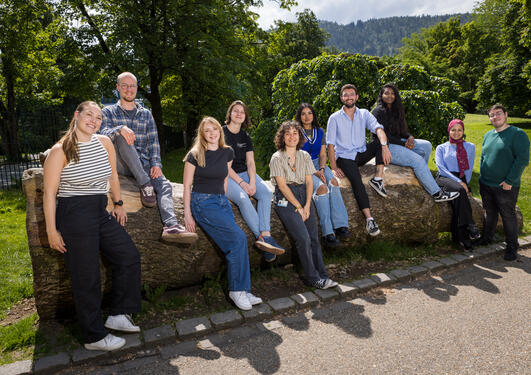Høgskulen på Vestlandet students present a new optogenetic system developed at the Centre
Thanks to the work of two HVL intern bachelor students, the Chatzigeorgiou lab can now enjoy a new automated system to modulate gene expression in Ciona using light.
Main content
Kristen Daae Rafoss and Daniel Jensson are finishing their Bachelor’s degree in electrical engineering at Høgskulen på Vestlandet. For their graduation project, they chose to join Marios Chatzigeorgiou's group at the Michael Sars Centre.
The two students, supervised by Head Engineer Jørgen Høyer, successfully built a fully automated optogenetic system. Animals are placed in a small incubator fitted with a lighting system and a camera. Inside, researchers have control over a wide range of light parameters such as wavelength, light intensity, as well as the duration and interval between light pulses. Using the camera, they can follow the response of the animals to stimuli over a set period of time.
“We can now setup our experiments just before the end of the day and come back the next morning to find out if the experiment has worked!”
Marios Chatzigeorgiou
The Chatzigeorgiou lab has a long-standing interest in using biological molecules that are activated by light to control signaling pathways, a method called optogenetics. To perform optogenetic experiments, scientists need equipment capable of delivering a large diversity of light stimuli. Previous attempts to set up such systems in the lab were rather impractical: researchers would have to control the light stimulus delivery manually, in some cases for as long as twelve consecutive hours. Thanks to the work of Kristen and Daniel, this is a problem of the past.
Daniel and Kristen found this first experience applying their skills to a concrete problem both enjoyable and educational. Kristen learned a lot about how to work with electronics, but also how to collaborate with colleagues. “It was very nice working with people who are so specialized in their field”, Daniel added. “People at the Centre are competent, and I was very happy to work with professionals”.

Kristen Daae Rafoss, Daniel Jensson and Jørgen Høyer present their setup at the HVL EXPO.
Communicating the limitations and requirements of biological systems could be challenging at times due to the interdisciplinary nature of the project. Jørgen’s expertise in electrical engineering helped close this gap, together with the students’ positive attitude. “They brought a lot of knowledge and enthusiasm with regards to technology and electronics”, Jørgen said. “HVL students are always quite curious and find it nice to work in a research environment where everything is new and interesting for them.”
To conclude the semester, Daniel and Kristen presented their work at EXPO, a yearly exhibition organized by HVL. They brought along some sea anemones and tunicates and demonstrated the system to visitors and participants, a highlight after a semester of hard work. “The setup performed up to standards, and we got to increase the lab’s automation and experimental capabilities”, Marios said. “I really hope that we can host more students next year, I am already thinking of some really nice equipment that I would like them to build!”.






